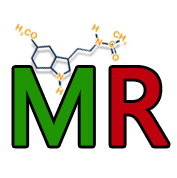Melatonin and phase separation: potential interactions and significance
Melatonin regulation of biomolecular condensates
Abstract
This commentary explores the leading edge of current understanding of the potential interactions associated with melatonin and the regulation of membraneless organelles (MLOs) formed via liquid‐liquid phase separation (LLPS) presented in recently published hypothetical reviews. As the scientific community increasingly recognizes the relevance of biomolecular condensates as fundamental organizers and propellers of cellular biochemistry, and that LLPS may be the quintessential process that provides insight into elusive physiological and pathological cellular conditions, the ancient role of melatonin in this new and exciting framework of cellular biology must be fully realized to its maximum potential.
References
2. Reiter RJ, Rosales-Corral S, Tan DX, et al. (2017) Melatonin as a mitochondria-targeted antioxidant: one of evolution’s best ideas. Cell. Mol. Life Sci. 74 (21): 3863–3881. https://doi.org/10.1007/s00018-017-2609-7.
3. Loh D, Reiter RJ (2022) Melatonin: Regulation of prion protein phase separation in cancer multidrug resistance. Molecules 27 (3), 705. https://doi.org/10.3390/molecules27030705.
4. Loh D, Reiter RJ (2021) Melatonin: Regulation of biomolecular condensates in neurodegenerative disorders. Antioxidants (Basel) 10 (9): 1483. https://doi.org/10.3390/antiox10091483.
5. Banani SF, Lee HO, Hyman AA, Rosen MK (2017) Biomolecular condensates: organizers of cellular biochemistry. Nat. Rev. Mol. Cell Biol. 18 (5): 285–298. https://doi.org/10.1038/nrm.2017.7.
6. Poudyal RR, Pir Cakmak F, Keating CD, Bevilacqua PC (2018 ) Physical principles and extant biology reveal roles for rna-containing membraneless compartments in origins of life chemistry. Biochemistry 57 (17): 2509–2519. https://doi.org/10.1021/acs.biochem.8b00081.
7. Xue B, Dunker AK, Uversky VN (2012) Orderly order in protein intrinsic disorder distribution: Disorder in 3500 proteomes from viruses and the three domains of life. J. Biomol. Struct. Dyn. 30 (2): 137–149. https://doi.org/10.1080/07391102.2012.675145.
8. Patel A, Malinovska L, Saha A et al. (2017) ATP as a biological hydrotrope. Science 356 (6339): 753–756. https://doi.org/10.1126/science.aaf6846.
9. Henninger J, Oksuz O, Shrinivas K et al. (2021) RNA-mediated feedback control of transcriptional condensates. Cell 184 (1): 207–225.e24. https://doi.org/10.1016/j.cell.2020.11.030.
10. Zhu S, Gu J, Yao J et al. (2022) Liquid-liquid phase separation of RBGD2/4 is required for heat stress resistance in arabidopsis. Dev. Cell 57 (5): 583–597.e6. https://doi.org/10.1016/j.devcel.2022.02.005.
11. Riback JA, Katanski CD, Kear-Scott JL et al. (2017) Stress-triggered phase separation is an adaptive, evolutionarily tuned response. Cell 168 (6): 1028–1040.e19. https://doi.org/10.1016/j.cell.2017.02.027.
12. Rhine K, Vidaurre V, Myong S (2020) RNA droplets. Annu. Rev. Biophys. 49: 247–265. https://doi.org/10.1146/annurev-biophys-052118-115508.
13. Tan DX, Hardeland R (2021) The reserve/maximum capacity of melatonin’s synthetic function for the potential dimorphism of melatonin production and its biological significance in mammals. Molecules 26 (23): 7302. https://doi.org/10.3390/molecules26237302.
14. Martín M, Macías M, León J, et al. (2002) Melatonin increases the activity of the oxidative phosphorylation enzymes and the production of ATP in rat brain and liver mitochondria. Int. J. Biochem. Cell Biol. 34 (4): 348–357. https://doi.org/10.1016/s1357-2725(01)00138-8.
15. Reiter R, Sharma R, Ma Q et al. (2020) Melatonin inhibits warburg-dependent cancer by redirecting glucose oxidation to the mitochondria: A mechanistic hypothesis. Cell. Mol. Life Sci. 77 (13): 2527–2542. https://doi.org/10.1007/s00018-019-03438-1.
16. Jain S, Wheeler JR, Walters R et al. (2016) ATPase-modulated stress granules contain a diverse proteome and substructure. Cell 164 (3): 487–498. https://doi.org/10.1016/j.cell.2015.12.038.
17. Tan DX, Manchester LC, Terron MP, Flores LJ, Reiter RJ (2007) One Molecule, Many Derivatives: A Never-Ending Interaction of Melatonin with Reactive Oxygen and Nitrogen Species? J. Pineal Res. 42 (1): 28–42. https://doi.org/10.1111/j.1600-079X.2006.00407.x.
18. Villa-Pulgarín JA, Gajate C, Botet J et al. (2017) Mitochondria and lipid raft-located FOF1-ATP synthase as major therapeutic targets in the antileishmanial and anticancer activities of ether lipid edelfosine. PLoS Negl. Trop. Dis. 11 (8): e0005805. https://doi.org/10.1371/journal.pntd.0005805.
19. Bolmatov D, McClintic WT, Taylor G, et al. (2019) Deciphering melatonin-stabilized phase separation in phospholipid bilayers. Langmuir 35 (37): 12236–12245. https://doi.org/10.1021/acs.langmuir.9b01534.
20. Amen T, Kaganovich D (2020) Stress granules sense metabolic stress at the plasma membrane and potentiate recovery by storing active pkc1. Sci. Signal. 13 (623): page number! https://doi.org/10.1126/scisignal.aaz6339.
21. Herlan G, Giese G, Wunderlich F (1979) Influence of nuclear membrane lipid fluidity on nuclear RNA release. Exp. Cell Res. 118 (2): 305–309. https://doi.org/10.1016/0014-4827(79)90155-1.
22. Hachiya N, Sochocka M, Brzecka A, Nuclear envelope and nuclear pore complexes in neurodegenerative diseases-new perspectives for therapeutic interventions. Mol. Neurobiol. 58 (3): 983–995. https://doi.org/10.1007/s12035-020-02168-x.
23. Ries R, Zaccara S, Klein P (2019) m6A Enhances the phase separation potential of mRNA. Nature 571 (7765): 424–428. https://doi.org/10.1038/s41586-019-1374-1.
24. Anders M, Chelysheva I, Goebel I (2018) Dynamic m6A methylation facilitates mrna triaging to stress granules. Life Sci, Alliance 1 (4): e201800113. https://doi.org/10.26508/lsa.201800113.


This work is licensed under a Creative Commons Attribution 4.0 International License.
For all articles published in Melatonin Res., copyright is retained by the authors. Articles are licensed under an open access Creative Commons CC BY 4.0 license, meaning that anyone may download and read the paper for free. In addition, the article may be reused and quoted provided that the original published version is cited. These conditions allow for maximum use and exposure of the work, while ensuring that the authors receive proper credit.
In exceptional circumstances articles may be licensed differently. If you have specific condition (such as one linked to funding) that does not allow this license, please mention this to the editorial office of the journal at submission. Exceptions will be granted at the discretion of the publisher.


